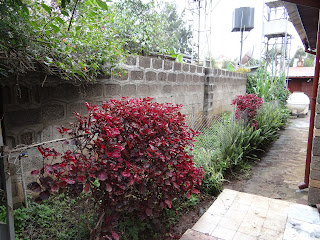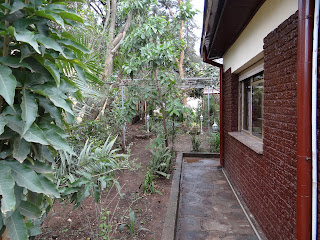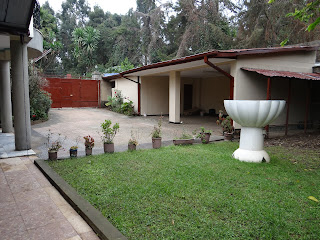What I’ve learned the past few weeks:
African time is real…things happen when they happen, not
before but could be much later as well.
Who knows? Relax… try back tomorrow.
Our bamboo lady said our next order will be done in a week. The first time we ordered, I believed that
and was very excited and disappointed when that date arrived. It took more like a week and a half. I am now thinking I will be happy when our next
order of furniture arrives, whenever that might be. Looking forward to finishing our sun room.
If something is not logged/inventoried in the computer, you
can’t buy it…even if it is a very expensive item. Relax and try back tomorrow. Maybe it will be
in the computer then.
If you don’t have a receipt for your cable, phone service,
beer and pop cases…forget about it!
Relax, go home, and try back tomorrow.
Don’t even ask for help with these things. ALWAYS keep ALL receipts. Our receipt drawer is overflowing! Need file folders!
At the duty free store, you need to go five different places
in order to buy any items. It is important to have your item handwritten, then
typed, then stamped, then paid for and then verified before you walk out the
door. Relax and accept the process. Don’t worry...be happy!
Cell phone service is unpredictable at best. Sending a text could get to the person in an
hour or possibly the next day. Calling….well,
let’s just say it takes perseverance! So, most people just drop in without
calling. It is actually pretty darn nice
not to be attached to a phone and have visitors come over to the house to chit
chat. The only downside…I don’t put on
my jammies until the evening! :)
On that same note, you
need to have a cell phone in order to attempt said unpredictable coverage. Do not keep your phone in the outside of your
purse pocket (Patti), even if you think you are VERY aware of your
surroundings. Distractions will cause
you to be unaware of your phone finding a new owner. Do not leave your phone in a school bathroom
(Michael) as your phone will get lonely and find someone else to play with. We have learned the lesson that this is just
stuff and can be replaced.
During a downpour, some streets turn into rivers and some
into lakes.
Having a party at our house was a beautiful thing. I loved having downtime with my
coworkers. I am lucky to work with
adventurous, funny, lively, kind and caring people. People I want to know better.
I realize how my thinking is changing. My normal is changing. My neighborhood and city have changed. I see things through different lenses. Addis Ababa, Ethiopia has become my new
normal. AND, surprisingly enough, I like
it. I actually find it beautiful.
My hope for myself is to find that balance I have always
strived for; I think I can do it here. I
want to be an effective teacher, a true friend, a loving wife, a thoughtful
daughter and sister, a community server, an explorer of Addis and the rest of
Ethiopia, a world traveler, motivated to stay physically fit, and most of all
be present in all situations. Relax…I
know balance won’t happen overnight, however, I already feel the change inside
and it feels good! I have time on my
side…African time!














.jpg)

















